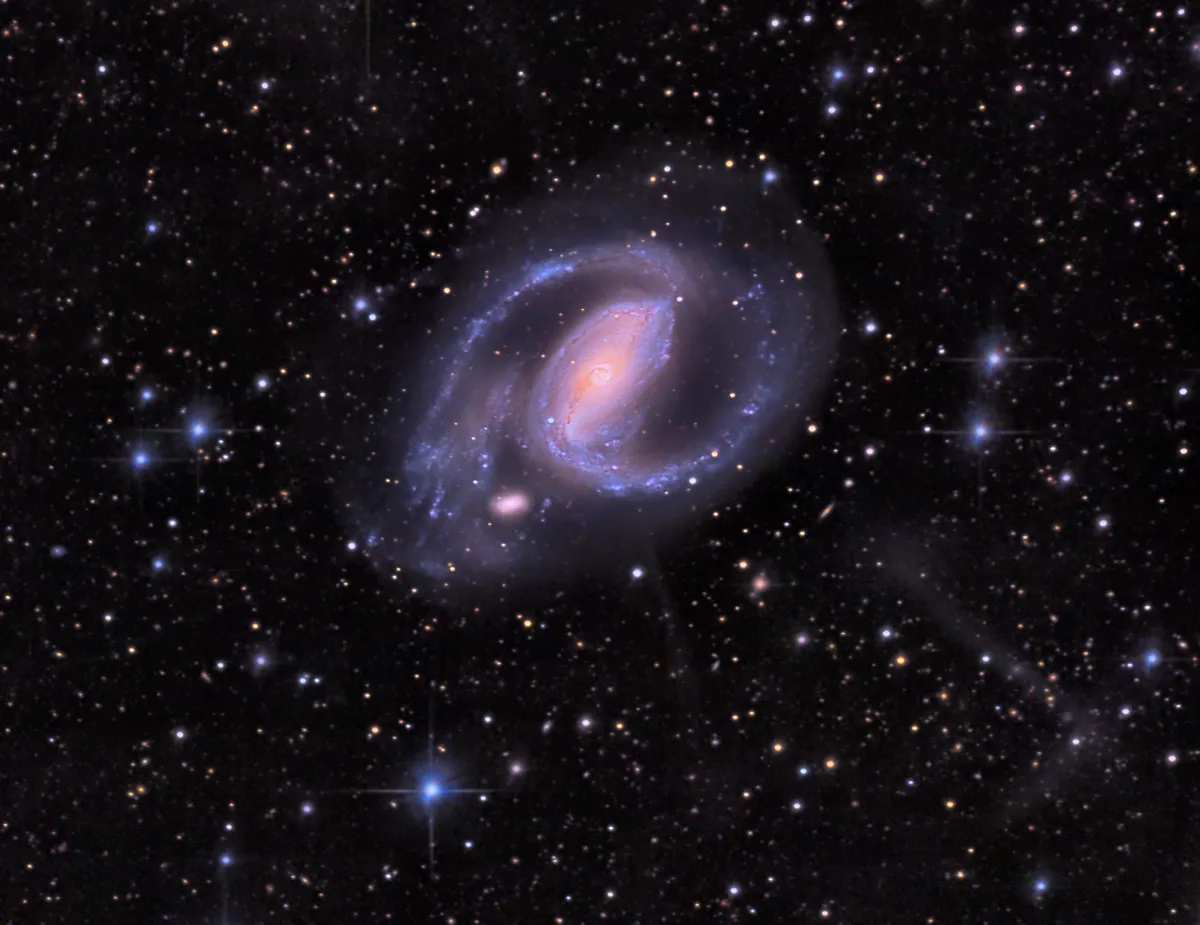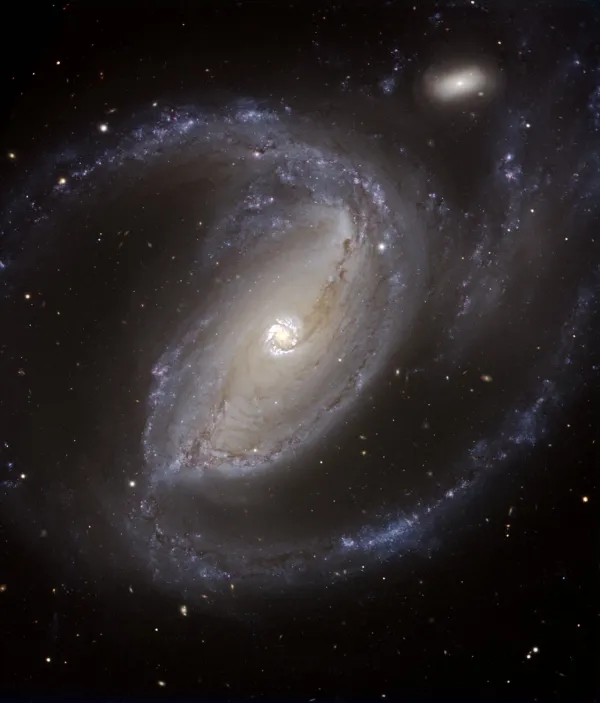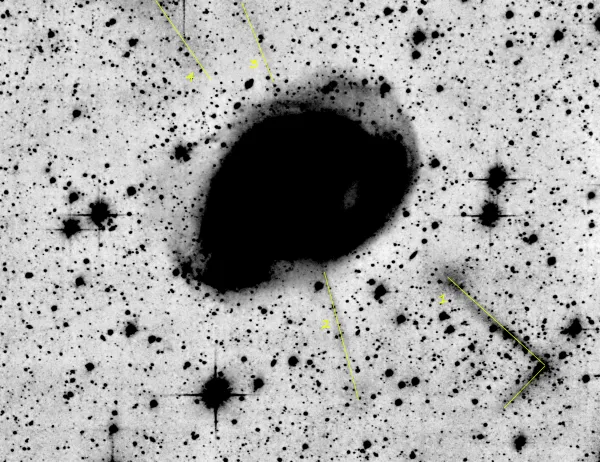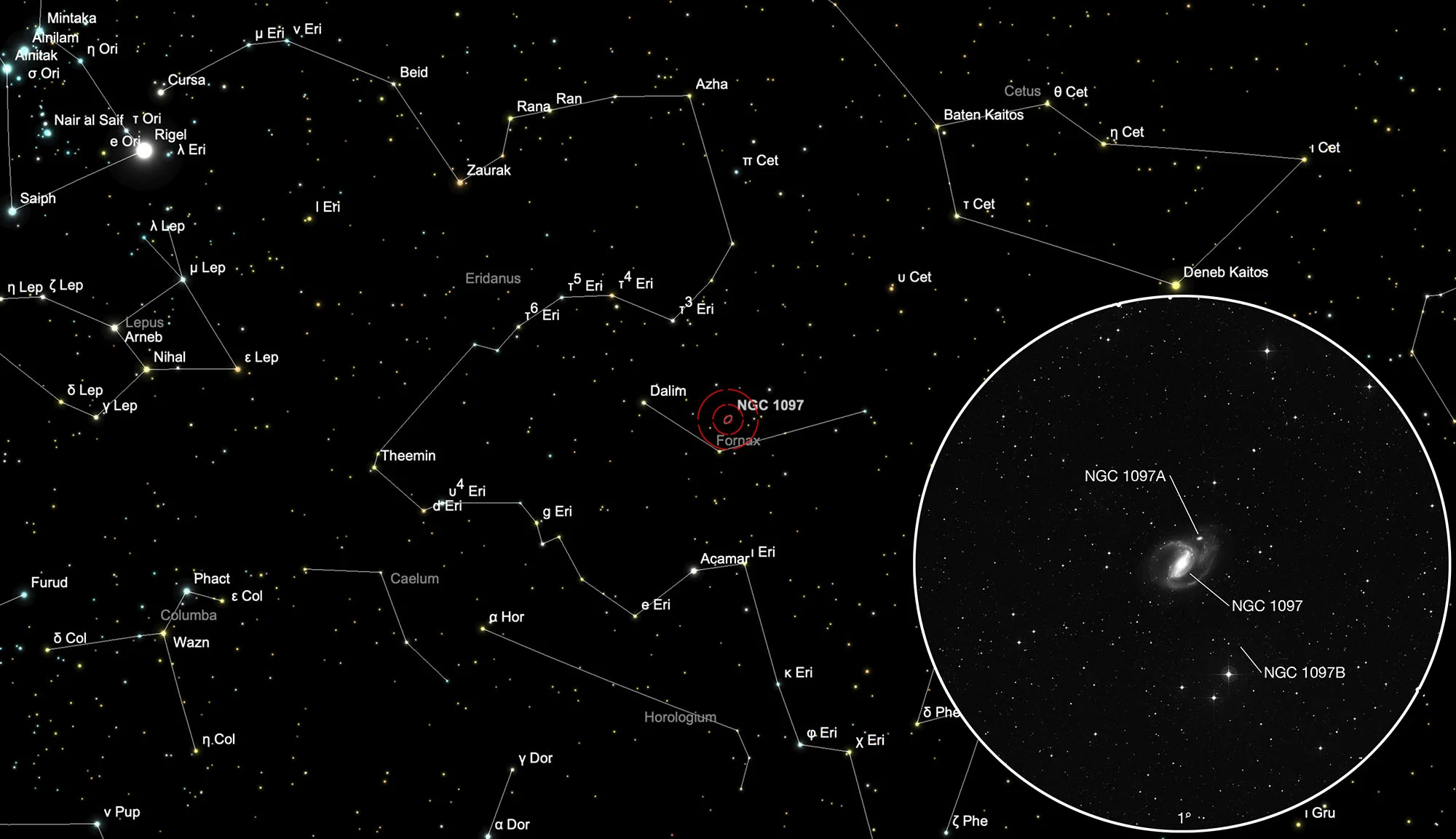Galaxy NGC 1097 (Arp 77)

History
William Herschel was the first to encounter this galaxy on 9 October 1790 with his 18.7 inch reflector. He cataloged it as V 48 (class V = very large nebulae). He noted: «Very bright, extended 75°, north preceding, south following, 8' long. A very bright nucleus, confined to a small part, or about 1' diameter.» [465]
In 1966 Halton Arp published his «Atlas of Peculiar Galaxies», where he divided galaxies into groups based on purely morphological criteria. The galaxy NGC 1097 was listed as number 77 in the group «#49-78: Spiral galaxy with small, high surface brightness companions in arms». He noted: «Material of arm seems to flow 'around' companion.» Hence this peculiar galaxy is also referred to as Arp 77 or APG 77. [199]

Physical Properties
NGC 1097 is a barred spiral galaxy of type SB(s)b and has an exceptionally bright core and therefore belongs to the group of Seyfert galaxies (Type 1), which, together with quasars, are among the most active galaxies. The supermassive black hole in the centre is fed by stars, gas and dust, which fall in spirals, are torn apart and heated up, forming an accretion disk around the black hole.
The distances calculated from the measured heliocentric velocities range from 14 Mpc to 17.7 Mpc (45.6 to 57.7 million light years). [145]
In Fig. 1 and Fig. 2, a noticeable bright ring can be seen around the black hole in the centre. There are masses of new stars that are stimulated by the inflow of matter via central bars. The diameter of the ring is estimated to be around 5000 light years and the mass of the black hole to be around 140 million solar masses. For comparison: the black hole in the centre of our Milky Way has «only» a few million solar masses. [235, 237]

In the image in Fig. 1, four faint rays can be seen, which seem to come radially from the centre of the galaxy. These are highlighted in Fig. 3. These were originally interpreted as the remnants of the jets of a currently less active core. A further analysis of the spectral energy distribution from radio to X-rays could rule out such an origin. These «jets» actually consist of individual stars and were created through gravitational interaction with small dwarf galaxies. The main culprit is not the small, elliptical galaxy NGC 1097A, but the remnant of it was discovered in the L-shaped tidal current. [238]
| Name | RA | Dec | Type | bMag | vMag | B-V | SB | Dim | PA | z | D(z) | MD | Dreyer Description | Identification, Remarks |
|---|---|---|---|---|---|---|---|---|---|---|---|---|---|---|
| NGC 1097 | 02 46 19.5 | -30 16 32 | Gx (SBb) | 10.2 | 9.5 | 0.7 | 13.8 | 9.4 × 6.6 | 130 | 0.004240 | 17.91 | 20.040 | vB, L, vmE 151°, vbMN | WH V 48; h 2495; GC 610; ESO 416-20; MCG -5-7-24; UGCA 41; IRAS 02441-3029; Arp 77; AM 0244-302 |
| NGC 1097 A | 02 46 09.9 | -30 13 43 | Gx (E4) | 14.1 | 13.1 | 1.0 | 12.2 | 0.8 × 0.5 | 105 | 0.004563 | 19.27 | vB, L, vmE 151°, vbMN | WH V 48; h 2495; GC 610; ESO 416-19; MCG -5-7-22 |
Finder Chart
The galaxy NGC 1097 is located in constellation Fornax (Furnace) at a declination of -30° and is therefore low in the southern sky. The best time for this is around November (opposition with the Sun on 7 November), when the constellation is highest above the southern horizon at midnight. Follow the river Eridanus next to Rigel in Orion to the second river bend. Unless the three stars Dalim (α Fornacis, 3.79 mag) - β Fornacis (4.46 mag) - ν Fornacis (4.96 mag) sink into the light dome of Milan or are blocked by a mountain, they show you the way to NGC 1097.
Visual Observation
762 mm aperture: The extremely low and very southerly Seyfert galaxy NGC 1097 with companion PGC 10479 should be planned very well in advance for your successful sighting. In our latitudes and especially in a mountain valley, visibility is only given for three quarters of an hour. Thanks to a right-angled triangle made up of three roughly equally bright stars, NGC 1097 can be clearly found, despite the already bad refraction. The core shows only a slight elongation, whereby it appears at least slightly washed out. The companion galaxy PGC 10479 exceeds expectations in terms of its visibility, it is much easier to spot than expected. — 30" f/3.3 Slipstream Dobsonian, Hasliberg Reuti, 5. 11. 2021, Eduard von Bergen
